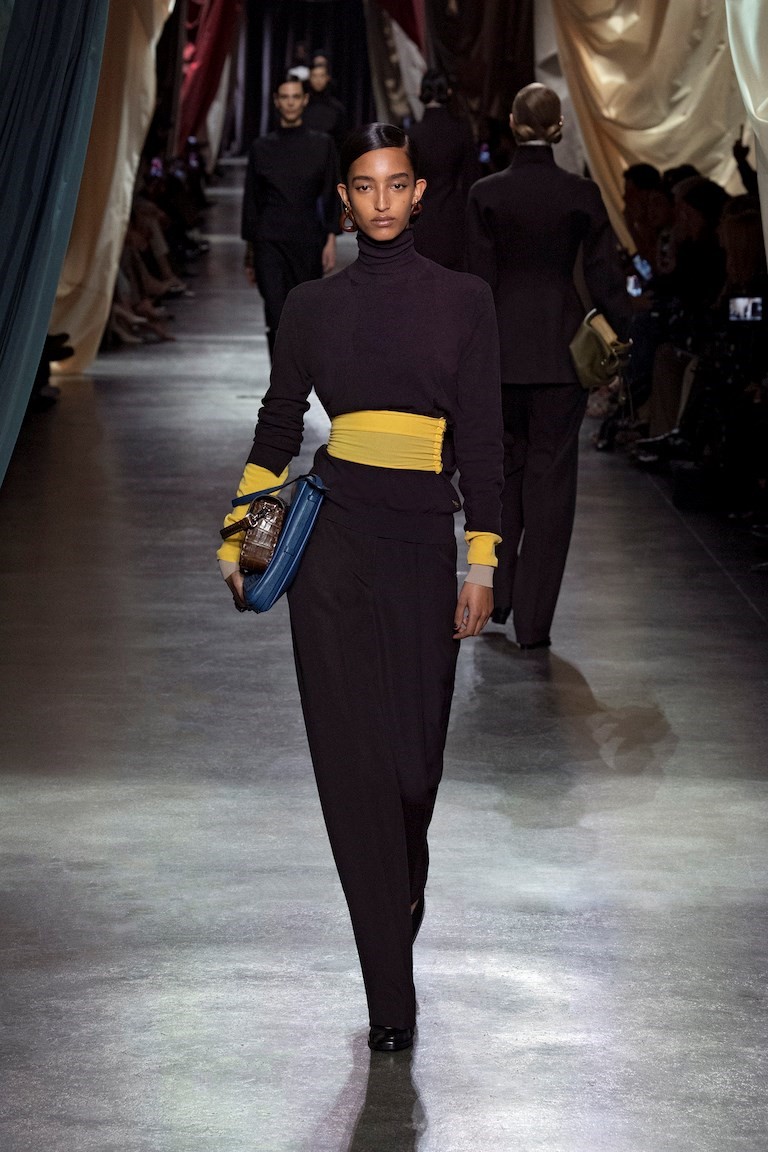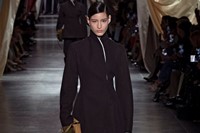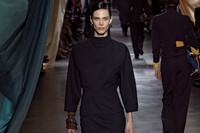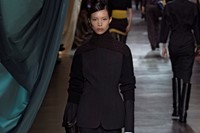“How a woman dresses that has something substantial to do.” That’s a phrase that leapt out as Kim Jones talked about his latest Fendi collection. What a great thing to be thinking about, especially at a company that has always been led by powerful women. Fendi was founded by a husband and wife team of Adele and Edoardo Fendi, but it was under their five daughters – Anna (the mother of Silvia Venturini Fendi, artistic director of accessories and menswear), Carla Franca and Paola – that the company rose to international prominence. It’s a company of powerful women, and these were clothes to dress them.
That said, Jones also brought plenty of his own to the mix. He began, he said, by looking at Karl Lagerfeld’s Fendi sketches from 1984, which had some kind of cross-pollination, somehow, with the London look of the Blitz Kids. The seminal figures of that fashion scene are creatives Jones has long admired, referenced and even collected – he has a significant tranche of clothes by unsung heroes of early 80s London design like Rachel Auburn, as well as plenty of Westwood and a selection of Leigh Bowery’s costumes. “It was a point when British subcultures and styles became global,” Jones reasoned. So he exported a bit of club kid style to Rome, incongruous as that seems on paper.
In the flesh, in the room, however, it all made sense. And in the room is how these Fendi clothes are best experienced – all the better to appreciate the sculptural upturn of a collar, the line of the peplums and delineated waists. Roman statuary from the Galleria Borghese decorated delicate chiffons, but so did oversized beaded polka-dots inspired by Bowery.
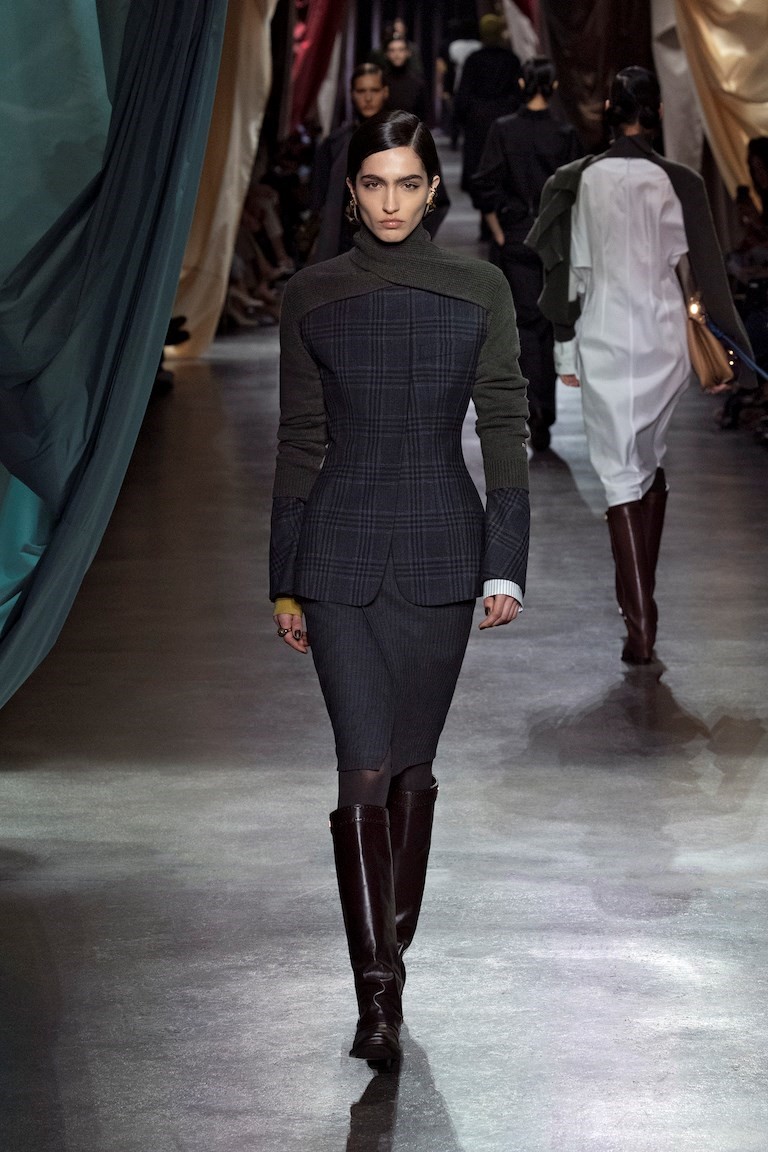

Of course, the meshing of Roman and British influences was inherent when they gave Fendi’s reins to Jones. But it was the Roman that roamed through this one, with drapery printed but also evoked through asymmetrically spliced knits laid across the figure. Single sleeves echoed the chopped limbs of ancient statues, laying colour across the body – those white statues were once painted bright, after all. And leather dresses lapping the body had a sense of sculpture, as if hewn from a single block of material – bag and boots matching, too.
Sculpting clothes, sculpting the body. This Fendi collection was less about an aesthetic of Rome than its sensibility. But then again, sculpture has a British connection through fashion – Jones opened this show with tailoring, which finds its roots in English fashion in the late 18th century, when men sought to emulate the heroic figures of Greco-Roman statuary through the cut of their clothes. And of course that tailoring emerged in time with the Industrial Revolution, those clothes as dynamic engines for work. That syncs right back up with Jones’ idea of substantial women – working girls or Roman goddesses alike.
